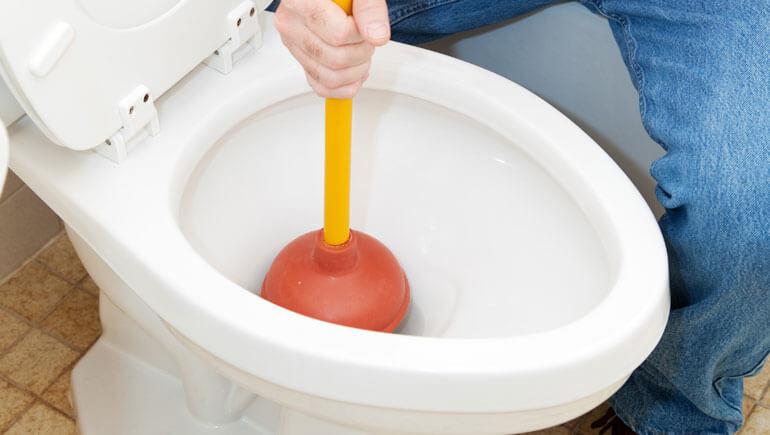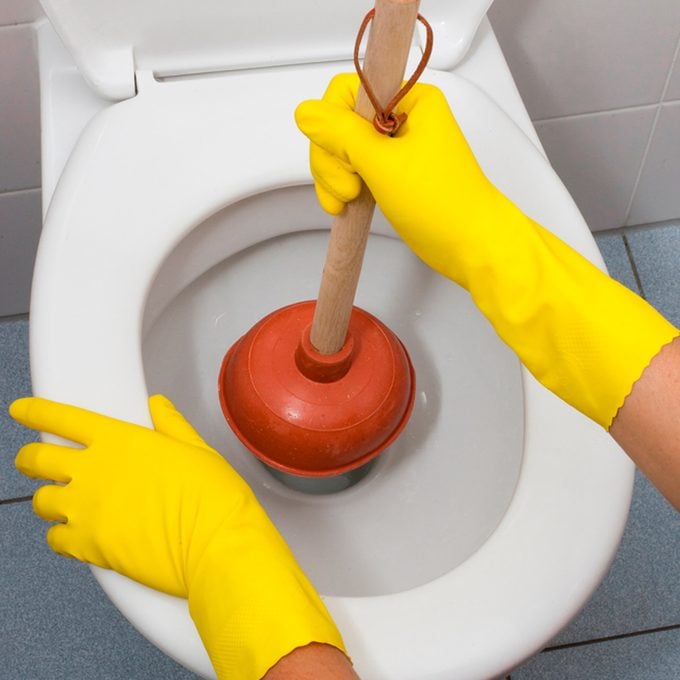How to Perfect Plunger and Drain Cleaners: Expert Guidance
How to Perfect Plunger and Drain Cleaners: Expert Guidance
Blog Article
The article author is making several good points on the subject of Tips on How to Effectively Use a Plunger as a whole in this article which follows.

Introduction
Correct upkeep of household drains is vital for preventing blockages and making certain smooth water circulation. One of the key tools in every homeowner's toolkit is the bettor, along with different drainpipe cleansers designed to take on persistent blockages efficiently. This short article explores how to utilize bettors and drainpipe cleansers effectively to keep your drains streaming openly.
Section 1: Understanding Bettors
Types of Plungers
There are a number of sorts of bettors readily available, each developed for various types of drains pipes and blocks. The most usual types consist of mug plungers, flange plungers, and accordion bettors.
How Plungers Work
Bettors deal with the concept of producing stress and suction to dislodge blockages. When effectively applied over a drain, they produce a vacuum that can pull out particles or break up blockages.
Picking the Right Bettor
Choosing the ideal plunger depends on the sort of drain and the nature of the obstruction. Mug plungers are optimal for sinks and tubs, while flange plungers are much better fit for bathrooms as a result of their layout.
Typical Errors with Plungers
Preventing these mistakes ensures effective plunging: improper seal around the drainpipe, inadequate force, and not clearing bordering debris.
Section 2: Making Use Of Plungers Properly
Prep work
Prior to plunging, ensure the plunger covers the drainpipe completely and forms a limited seal. Clear any type of visible particles around the drain opening.
Method
Beginning with gentle plunging motions to construct suction. Boost stress progressively, using a constant rhythm. Repeat as required until the drainpipe gets rid of.
Fixing Tips
If diving doesn't function, try changing the seal, applying oil jelly for a much better seal, or utilizing a various kind of bettor.
Section 3: Comprehending Drainpipe Cleaners
Types of Drainpipe Cleaners
Drain cleaners can be chemical or enzymatic. Chemical cleansers make use of solid chemicals to dissolve clogs, while enzymatic cleaners use natural enzymes to break down organic matter.
Exactly How Drain Cleansers Work
Chemical cleaners react with obstructions to dissolve them, while chemical cleaners break down organic products like hair and grease without damaging pipelines.
Security Considerations
Constantly use gloves and eye defense when utilizing chemical drain cleansers. Make sure sufficient air flow and comply with manufacturer guidelines thoroughly.
Eco-Friendly Alternatives
Consider making use of vinegar and baking soda or enzyme-based cleansers for green options that are more secure for pipes and the atmosphere.
Area 4: Using Drain Cleaning Company Effectively
Application Methods
Put chemical cleansers directly into the drainpipe opening. Permit them to work for the recommended time before purging with warm water. Chemical cleaners should sit overnight.
Safety measures
Stay clear of blending various sorts of cleaners, as this can produce toxic fumes. Never use chemical cleaners along with a plunger, as splashing can occur.
Dealing With Stubborn Clogs
For persistent obstructions, take into consideration making use of a pipes snake or calling a professional plumber to prevent damages to pipelines.
Conclusion
In conclusion, recognizing exactly how to use bettors and drainpipe cleaners properly is crucial for preserving healthy pipes systems. By selecting the right devices and methods, homeowners can deal with minor blockages and prevent significant plumbing problems down the line.
How To Properly Use A Plumbing Snake To Clear Drains
When any drain clogs in our home arise, we tend to gravitate toward the plunger and little else. In cases where the plunger and its vacuum-created pressure are not able to clear clogs, many immediately move to harmful chemicals or simply call their plumber to fix the issue.
we’re happy to help with all drain cleaning needs and concerns. This includes informing you on a few other home remedies you may have at your disposal for minor to moderate clogs, one of which is the use of a plumbing snake. Many people have never used one of these before – let’s go over the steps to take when your drain clogs and you have a plumbing snake available.
Attempt Plunger Use
The first step here, as we noted above, should indeed be to grab your plunger when you notice a drain clog and attempt to resolve it this way. If you’re unsure how to use a particular type of plunger, our plumbers can answer any questions you have. If this doesn’t do the trick, however, you move on to the snake.
Locate And Prepare Snake
A plumbing snake is a metal or plastic device that’s generally about a quarter of an inch thick. It’s design with significant extensions, meant to reach down into your clogged drain and push the clog out. Snakes also contain drain augers that will latch onto and push stubborn blockages.
If your plunger doesn’t clear a clog, locate your snake and bring it to the drain in question. We also recommend keeping a bucket nearby to collect the clog once you pull it out, plus we’d advise wearing goggles and possibly protective gloves.
Feed Snake
Once you’re ready to go, feed the snake slowly down the drain, using the crank device it comes with to keep it moving until it finds the clog. Once this happens, much of the clog will be latched onto the coil so you can pull it out, while the rest will simply break up and flow downward.
Detach Debris
Remove the snake slowly from the drain, and once you’ve done so, pick off any debris that’s stuck to the coil. This is another area where wearing gloves is a must.
Flush Drain
Finally, take a few minutes to ensure the snake has done its job correctly. If you’ve been using it on a toilet, flush the toilet a couple times and make sure everything flows well. If you’ve used it on a different drain, flush it with some room temperature water.
https://www.mybuddytheplumber.com/blog/how-to-properly-use-a-plumbing-snake-to-clear-drains/

Application Methods
Put chemical cleansers directly into the drainpipe opening. Permit them to work for the recommended time before purging with warm water. Chemical cleaners should sit overnight.
Safety measures
Stay clear of blending various sorts of cleaners, as this can produce toxic fumes. Never use chemical cleaners along with a plunger, as splashing can occur.
Dealing With Stubborn Clogs
For persistent obstructions, take into consideration making use of a pipes snake or calling a professional plumber to prevent damages to pipelines.
Conclusion
In conclusion, recognizing exactly how to use bettors and drainpipe cleaners properly is crucial for preserving healthy pipes systems. By selecting the right devices and methods, homeowners can deal with minor blockages and prevent significant plumbing problems down the line.
How To Properly Use A Plumbing Snake To Clear Drains
When any drain clogs in our home arise, we tend to gravitate toward the plunger and little else. In cases where the plunger and its vacuum-created pressure are not able to clear clogs, many immediately move to harmful chemicals or simply call their plumber to fix the issue.
we’re happy to help with all drain cleaning needs and concerns. This includes informing you on a few other home remedies you may have at your disposal for minor to moderate clogs, one of which is the use of a plumbing snake. Many people have never used one of these before – let’s go over the steps to take when your drain clogs and you have a plumbing snake available.
Attempt Plunger Use
The first step here, as we noted above, should indeed be to grab your plunger when you notice a drain clog and attempt to resolve it this way. If you’re unsure how to use a particular type of plunger, our plumbers can answer any questions you have. If this doesn’t do the trick, however, you move on to the snake.
Locate And Prepare Snake
A plumbing snake is a metal or plastic device that’s generally about a quarter of an inch thick. It’s design with significant extensions, meant to reach down into your clogged drain and push the clog out. Snakes also contain drain augers that will latch onto and push stubborn blockages.
If your plunger doesn’t clear a clog, locate your snake and bring it to the drain in question. We also recommend keeping a bucket nearby to collect the clog once you pull it out, plus we’d advise wearing goggles and possibly protective gloves.
Feed Snake
Once you’re ready to go, feed the snake slowly down the drain, using the crank device it comes with to keep it moving until it finds the clog. Once this happens, much of the clog will be latched onto the coil so you can pull it out, while the rest will simply break up and flow downward.
Detach Debris
Remove the snake slowly from the drain, and once you’ve done so, pick off any debris that’s stuck to the coil. This is another area where wearing gloves is a must.
Flush Drain
Finally, take a few minutes to ensure the snake has done its job correctly. If you’ve been using it on a toilet, flush the toilet a couple times and make sure everything flows well. If you’ve used it on a different drain, flush it with some room temperature water.
https://www.mybuddytheplumber.com/blog/how-to-properly-use-a-plumbing-snake-to-clear-drains/

Hopefully you enjoyed our excerpt on Here's How to Correctly Use a Toilet Plunger. Thank you so much for taking a few minutes to read through our post. Don't hesitate to take the time to distribute this page if you enjoyed reading it. I thank you for your readership.
Booking Page Report this page